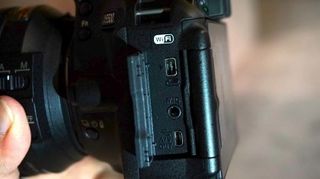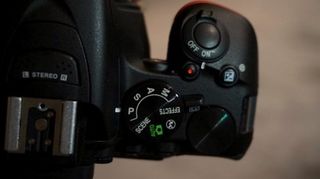Nikon D5500: Testing Nikon's first touchscreen SLR at CES 2015
Tap, focus, shoot

When it comes to digital SLRs, it's not all about the megapixels. The Nikon D5500, unveiled here at CES 2015, proves that in spades. Even though the D5500 has 24.2 megapixels, the same number as its predecessor, the D5300, the D5500 nonetheless has a slew of great features - chief among them a touch-enabled screen - that make it a noteworthy refresh. Add in a design update as well, and the D5500 earns an authoritative place in Nikon's lineup.
The D5500 doesn't replace the D5300 outright. Nikon expects D5300 to remain in its lineup for some time, albeit at a lower price. Whether you'd want to spring for the older model is questionable given the wide swath of improvements made to the D5500.
I spent time with the new camera on the CES show floor and found it a capable addition to the Nikon family. Though it loses GPS, the touch-enabled variable angle LCD is appreciated new feature.
First impressions
Let's start with the D5500's size. Nikon redesigned the body to make it both smaller and lighter as compared with its predecessor, a critical maneuver in an age when the DSLR has to compete against the smaller, more nimble interchangeable lens cameras (ILCs). The D5500 measures 4.9 x 3.8 x 2.8 inches, dimensions that shave 0.1 inch off the height, and 0.2 inch off the depth as compared with the D5300 and the D3300, two compact predecessors in Nikon's lineup.
The body alone weighs 0.93 pound (420 grams). That's a notable improvement over the D5300's 1.1 pounds (480g). Even the D3300, a previous lightweight in the lineup, weighs more now, at 1.01 pounds (460g). I applaud this effort to make the camera more lightweight, even while adding features - every fraction of a pound adds up, and consumers crave lightweight devices that are highly functional.
Nikon describes the body as monocoque, French for structural skin made of one big piece. The materials are a carbon fiber composite and a magnesium alloy. It was hard to gauge the weight of the body alone, as I took the camera for a spin using the larger of the two kit lens options. The D5500 is due to ship in early in February in both black and red body colors, with an MSRP of $899.95 for the body only. Add $100 to get it with the basic 18-55mm kit lens. Or, with the larger AF-S DX Nikkor 18-140mm f/3.5-5.6G VR II lens we tried out, the D5500 will cost $1,199.95.

A cursory first glance might lead you to think the black body of the D5500 looks fairly typical, and even identical to its older sibling. However, as soon as I picked up it up, it quickly became evident that that's not the case at all.
Get daily insight, inspiration and deals in your inbox
Get the hottest deals available in your inbox plus news, reviews, opinion, analysis and more from the TechRadar team.
It's obvious from looking at the top of the camera that the D5500 has had a redesign of its buttons and dials. The redesign makes most functions more efficient, by moving the fixed scene modes and creative functions off the Mode dial and into the touch-enabled rear menu (more on that in a moment).
Even if it might mean an extra tap or so in the interface, the use of touch still makes everything seem more efficient. Furthermore, the dial is now left for the primary shooting modes of an SLR, including Program, Manual, Shutter priority and Aperture. And to the right of the dial sits a smooth lever to flip down to activate the Live View shooting mode.

I would have liked the new, roomier dial to be slightly easier to turn than it was on the pre-production model we handled, but that's a minor complaint. The Info button has been re-situated to a more convenient spot. I appreciated the new dial for navigating menu options and shooting modes; gone was the jagged-edge scroll wheel for an easy-to-turn dial. When in manual mode, for example, this new dial adjusted the shutter speed; to control aperture, I had to push a small button on top of the camera to change which setting the dial affected.
There are other, more seemingly minor changes to the design of the D5500, too. For example, the doors covering the side ports (including HDMI and USB) feel a bit more secure than in the past. And the battery pack has been rotated by 90 degrees and placed into the grip to conserve on space and help shave off those fractions of an inch.
As for the battery, this model uses the same ENEL14a battery as on the D5300, however battery life has been extended by almost 37%, according to Nikon. That translates to a CIPA rating of 820 shots.
The hand grip is now deeper, which greatly improves the ergonomics of the camera. I found the deeper grip comfortable to use, and it made the D5500 easier to grab and hold than with previous models.
Most Popular

